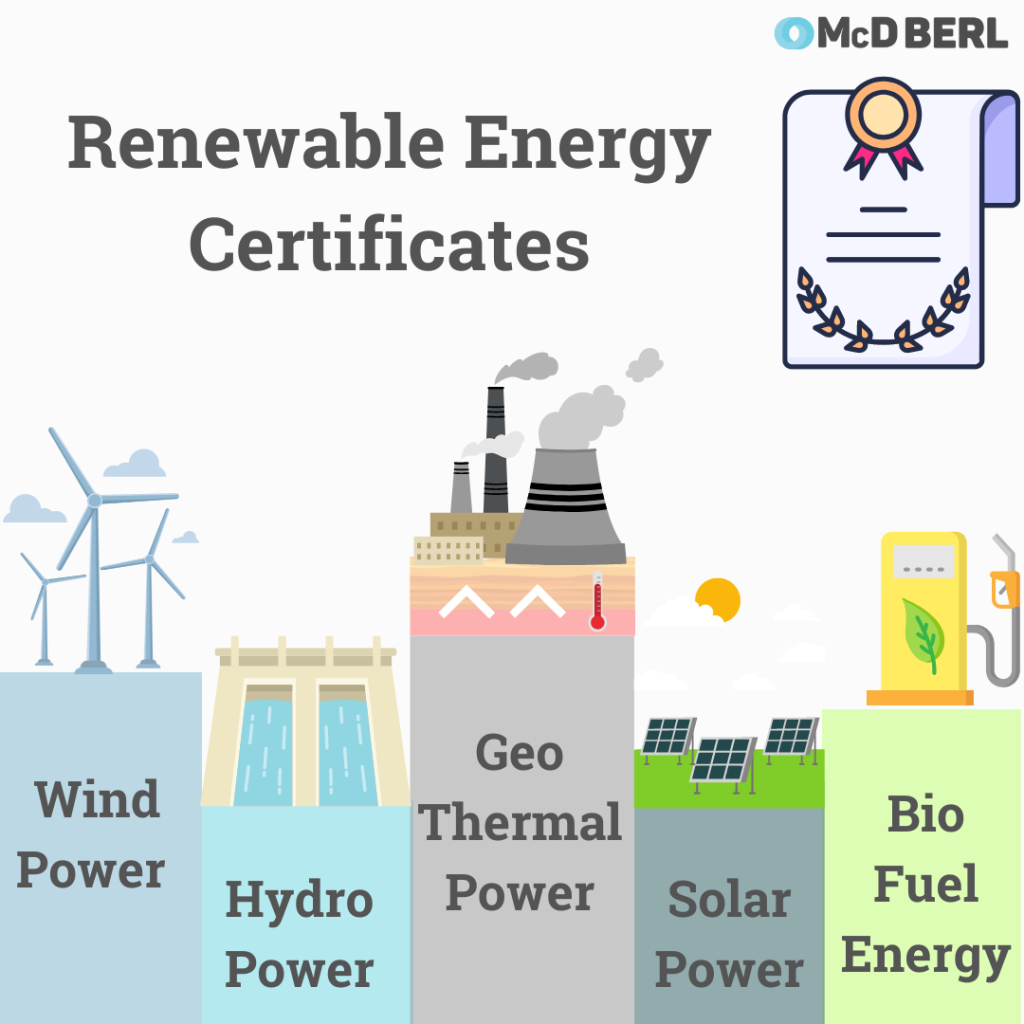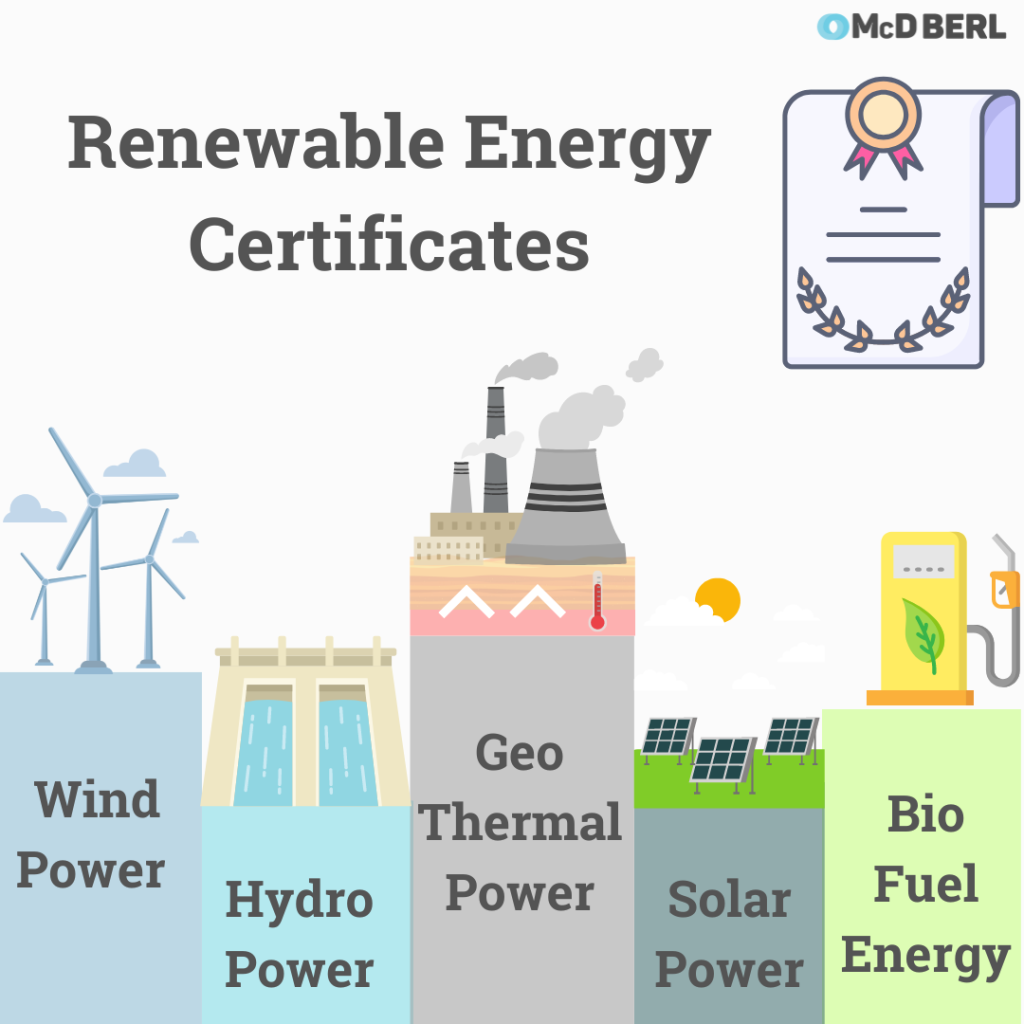
India’s Nationally Determined Contributions (NDC’s)reflects an ambitious target to reduce the emission intensity to 33-35% by 2005 levels and increase non-fossil fuel-based electricity production by 40%. India took the initiative to develop the renewable energy field a decade ago. During the UN Climate Action Summit, India announced a goal of 450 GW of renewable energy by 2030. To achieve all these goals, the Central Electricity Regulatory Commission (CERC) under the 2010, Electricity Act and the National Tariff policy announced the REC mechanism. CERC introduced a system for incentivizing electricity producers from renewable energy sources. The REC’s are tradable environmental commodities that represent a specific amount of renewable energy. These certificates are otherwise referred to as Renewable Energy Credits, Tradable Energy Certificates (TRC’s), or Green Tags, these are the currencies of the RE market.
How do REC’s Work?
REC is a tracking system for renewable sources including solar, wind, and other green energy entering the grid. CERC introduced a market for encouraging the growth of renewable sources and tackle emissions from the energy sector. The REC market enables the producers to trade the energy certificates.
For every megawatt-hour of RE generation, the electricity producer is rewarded with one certificate, in addition to this the producers can also sell electricity in the market. These certificates can be purchased by individuals, organizations, and businesses looking forward to offsetting their emissions.
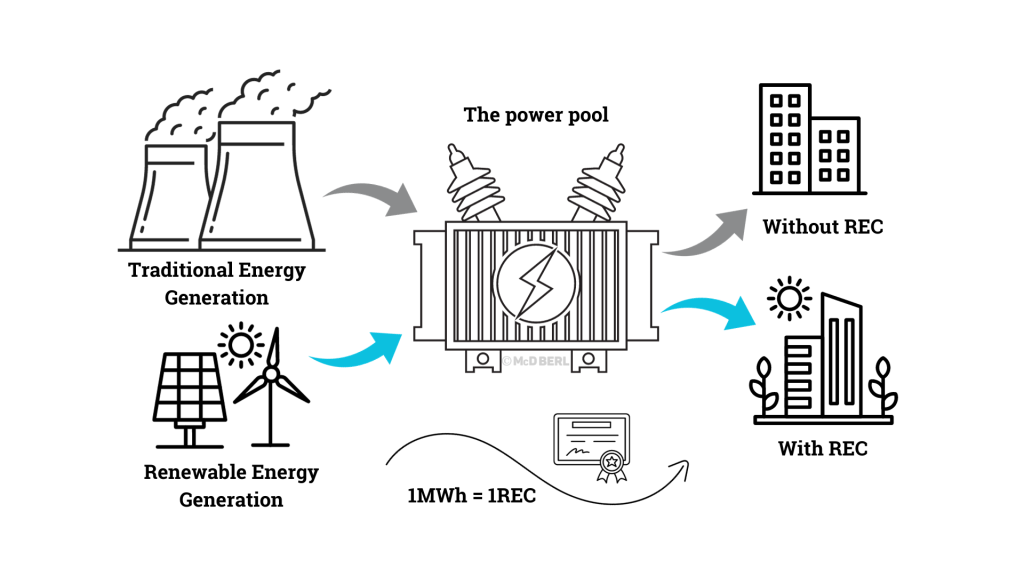
Types of REC’s –
RECs are classified under two categories namely Solar and Non-Solar REC’s. Solar REC’s are issued based on solar as the base source of electricity. Non solar REC’s are issued based on renewable energy source other than solar as the base of electricity.
Certificate Multiplier
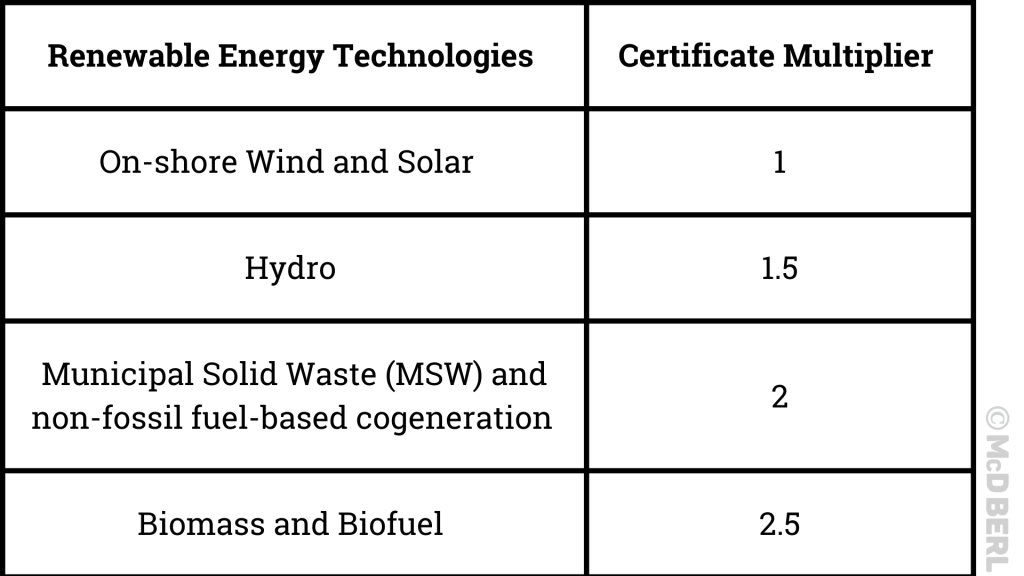
The CERC has assigned a multiplier concept for renewable energy technologies. To promote the less mature RE technologies over the other RE technologies the concept of certificate multiplier was introduced. The value of each renewable energy project will differ in value like on 1 multiplier for onshore and offshore wind projects and a higher multiplier value like 2 and 2.5 to promote the adoption and use of new technologies for municipal solid waste, biomass, biofuel etc. The multiplier may change depending on how individual technologies are boosted by policy initiatives.
Why to choose renewables as electricity source?
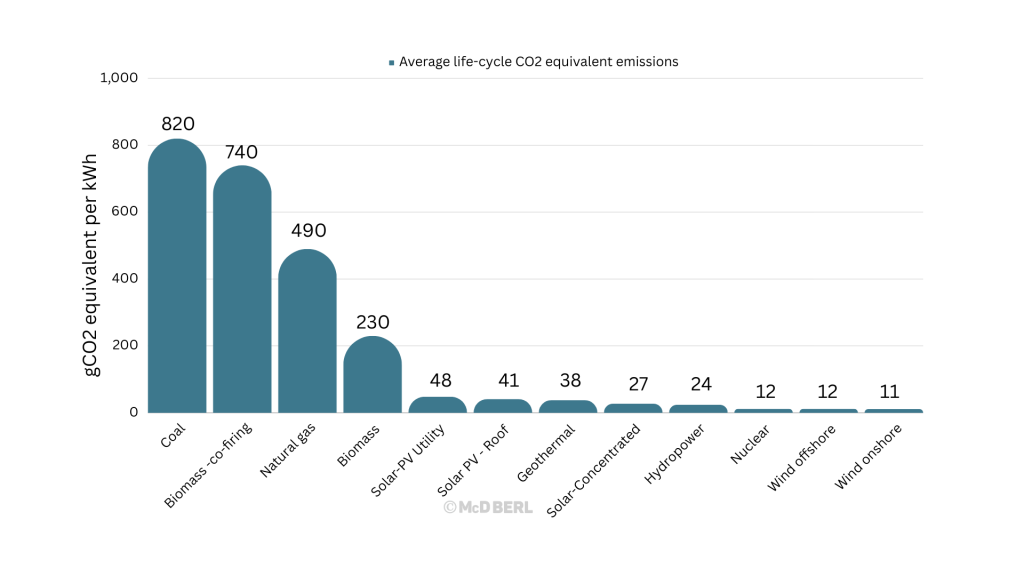
The carbon footprint of renewable sources is very low compared to other fossil sources. When you purchase REC source your energy from renewables. These REC purchase helps in lowering the carbon footprint unlike fossil sources like coal which has a very high carbon footprint of almost 820 grams of CO2 equivalent per kWh of electricity produced[IPCC].
Salient Features:
The below table explains the different features of the Renewable Energy Certificates and its mechanism as of 2023[CERC and Indian Energy Exchange].
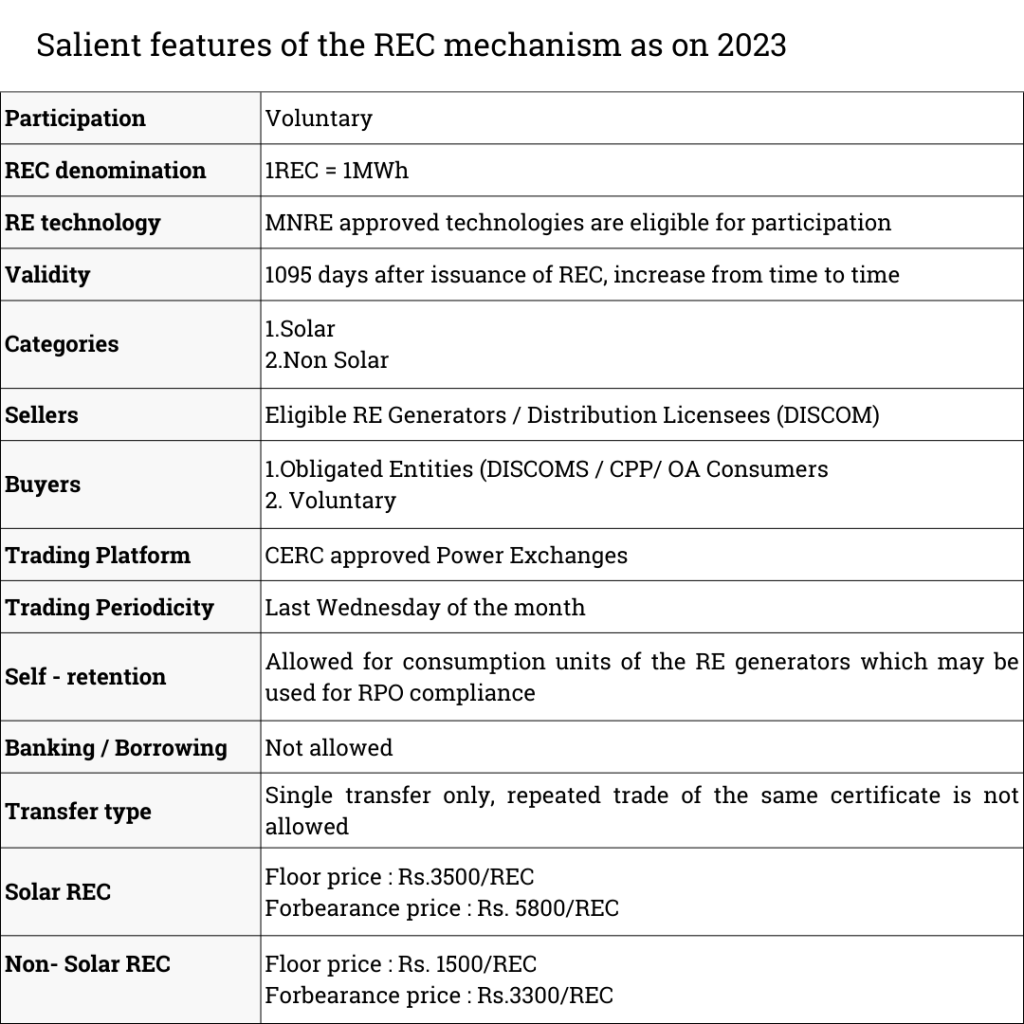
Benefits of Renewable Energy Certificates –
- Reducing Carbon Footprint: Since the carbon footprint of renewables is comparatively lower than the fossil fuel sources, the usage of REC’s directly reduces carbon emissions. Organizations can use these certificates to justify carbon reduction claims.
- Compliance: Purchasing REC’s helps businesses, organizations, and individuals to claim environmental responsibility and offset the carbon emissions. It also helps organizations to meet their climate commitments and Corporate Social Responsibilities.
- Market incentives: To regulate the growth of renewable energy projects that stimulate investment in clean energy technologies and infrastructure, the government and regulatory bodies created a market for REC’s. These REC’s incentivize the production and consumption of energy, by providing a means of compliance with the existing regulatory standards and extra incentives for clean energy production and utilization.
- Achieving the Decarbonization goal: REC’s provide a market-driven solution for the transition towards clean energy. This mechanism helps in contributing to the displacement of the carbon-intensive electricity generation and helps achieve India’s Net Zero goals.
Future prospects:
Though REC’s play an advancing role in the industry today, challenges such as regulatory frameworks, transparency of the market, and standardization still are a challenge to the growth of the sector. The REC mechanism stands as a beacon of hope in the fight against climate change and an instrument in steering the world towards a more sustainable and eco-friendly future.
The below graph explains the capacity additions and the growth of the REC’s in the past decade.
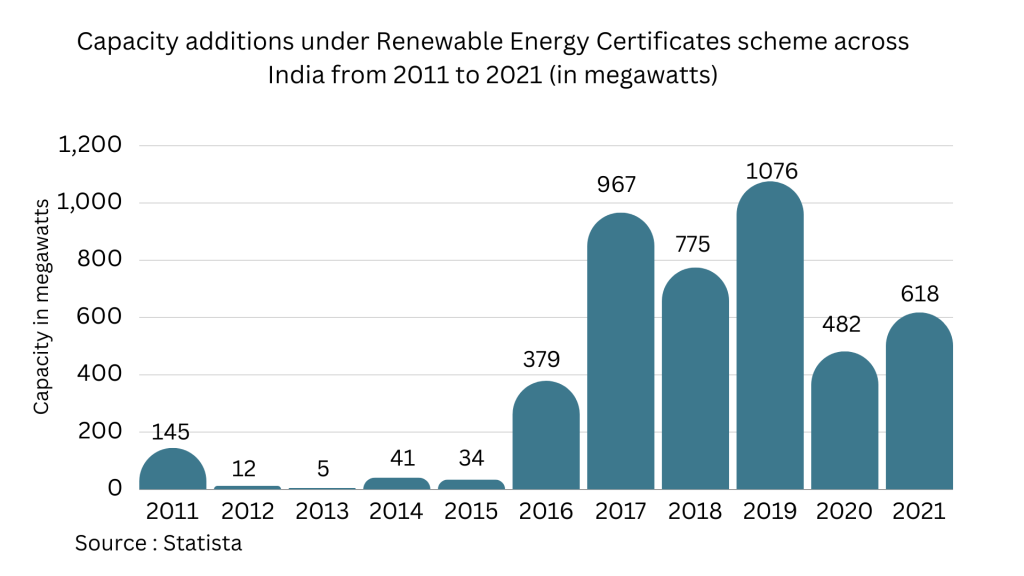
In India, the REC scheme has become a catalyst for substantial capacity additions, helping the nation with clean energy solutions. From wind to solar, REC-driven projects are expanding, shaping a sustainable path towards a greener and energy-efficient future.

